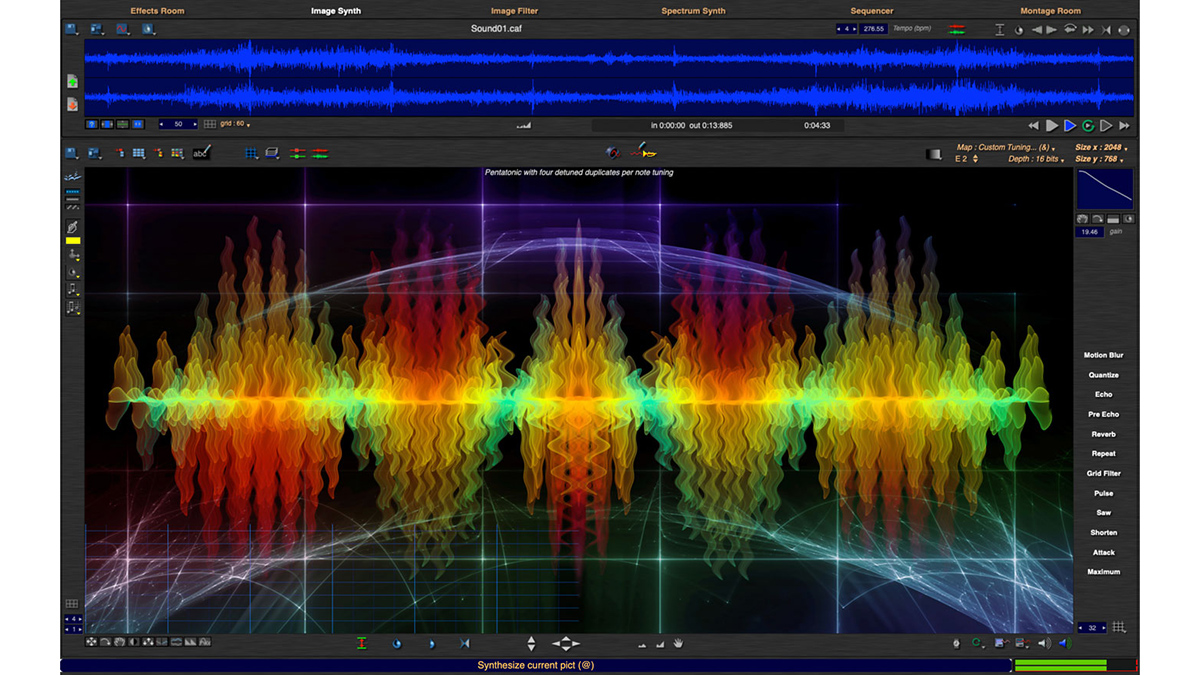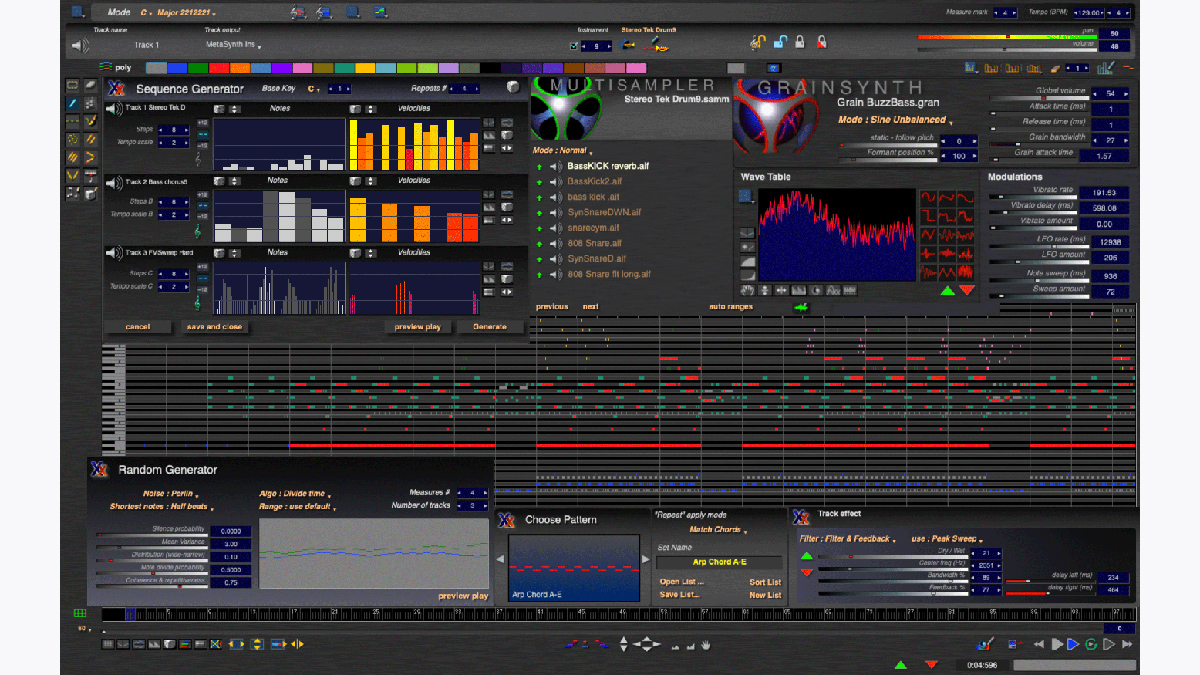Find out why the MetaSynth+Xx creative toolbox could give you a whole new way of looking at music-making
A very different kind of DAW

Every DAW has its own way of doing things, which is why each one has its own fanbase. However, all of the most high-profile music-making apps also share plenty of common features, and encourage what you might call a ‘traditional’ workflow.
Metasynth and its companion MIDI sequencer/generator Xx are unique. Yes, they’re designed to help you make music, but they go about their business in a very different way than a lot of the software you’re used to and, as such, can provide you with a whole new set of creative options.
The main app, Metasynth, is a sound design powerhouse, offering a series of creative ‘rooms’, each devoted to a particular area of synthesis or filtering. You can then combine all of the elements you’ve created into a final mix.
First up, we have the Image Synth, a one-of-a-kind tool that enables you to paint sound. An image can describe thousands of pitches and harmonics, which can be additively synthesized.

The level of control here is staggering. The micro-tonality goes way beyond what MIDI can represent, and various scales can be mapped to the result. You’ll find it to be a great tool for creating unique samples, loops, and sequences.
If you want more precise control composing with notes, try the Image Sequencer, a non-MIDI visual composition tool, where you paint notes on a keyboard scroll while pressing the Make Chord button to generate progressions. It lets you create note-based phrases and rhythm loops that can be rendered and sent elsewhere.
In both of these rooms, you have access to MetaSynth Instrument presets, as well as pop-up “plug-ins” where you can create your own synth voices and sampler banks.
The Spectrum Synth, meanwhile, analyses sounds and creates events that capture the original’s harmonics. These can then be manipulated, filtered and re-arranged to create new sounds or sequences which can be saved as Sampler Instruments for sequencing in the Image Synth, Image Sequencer, or Xx.
Continuing the visual theme, there’s the Image Filter, where you can draw precise dynamic stereo filters that you then apply to your audio samples and quickly preview the results.
As you’d expect, there are effects, too - but not the sort that you’re probably used to. Yes, you get traditional processors such as delay, reverb and chorus, but in the Effects Room there are also granular synthesis-based Grain and Shuffler effects. What’s more, the powerful graphic envelopes enable you to ‘play’ these effects as if they were instruments, taking them in unexpected directions.
The audio from each room can be rendered to the Sample Editor and then sent on to the other rooms for further processing, but that’s not the end of the story.
The suite also includes Xx, a standalone MIDI sequencer, which uses MetaSynth as its sound engine. This enables you to play the supplied MetaSynth Instruments (synths and samplers) from a keyboard, create ‘themes’ using the Sequence Generator tool, apply randomisation for variations, edit the sequence’s notes and controllers with drawing tools, and then publish the results as a MetaSynth project.

This allows for further processing in the Image Sequencer and Image Synth, with final mixing taking place in the Montage Room - A 24-track mixing environment that can be used to mix down full-length compositions or to layer and composite the sounds you create in the other rooms. Some early MetaSynth adopters might remember it being called MetaTrack.
We could tell you more, but the good news is that you can try MetaSynth+Xx for yourself simply by heading to the UI Software website and downloading a demo. You’ll then discover why the software has become something of a secret sonic weapon for the likes of Aphex Twin, Junkie XL and BT, and been used on film soundtracks such as Dune (Hans Zimmer), The Matrix Resurrections (Dane Davies), The Dark Knight and Inception (Mel Wesson).
Find out more on the UI Software website.
Want all the hottest music and gear news, reviews, deals, features and more, direct to your inbox? Sign up here.